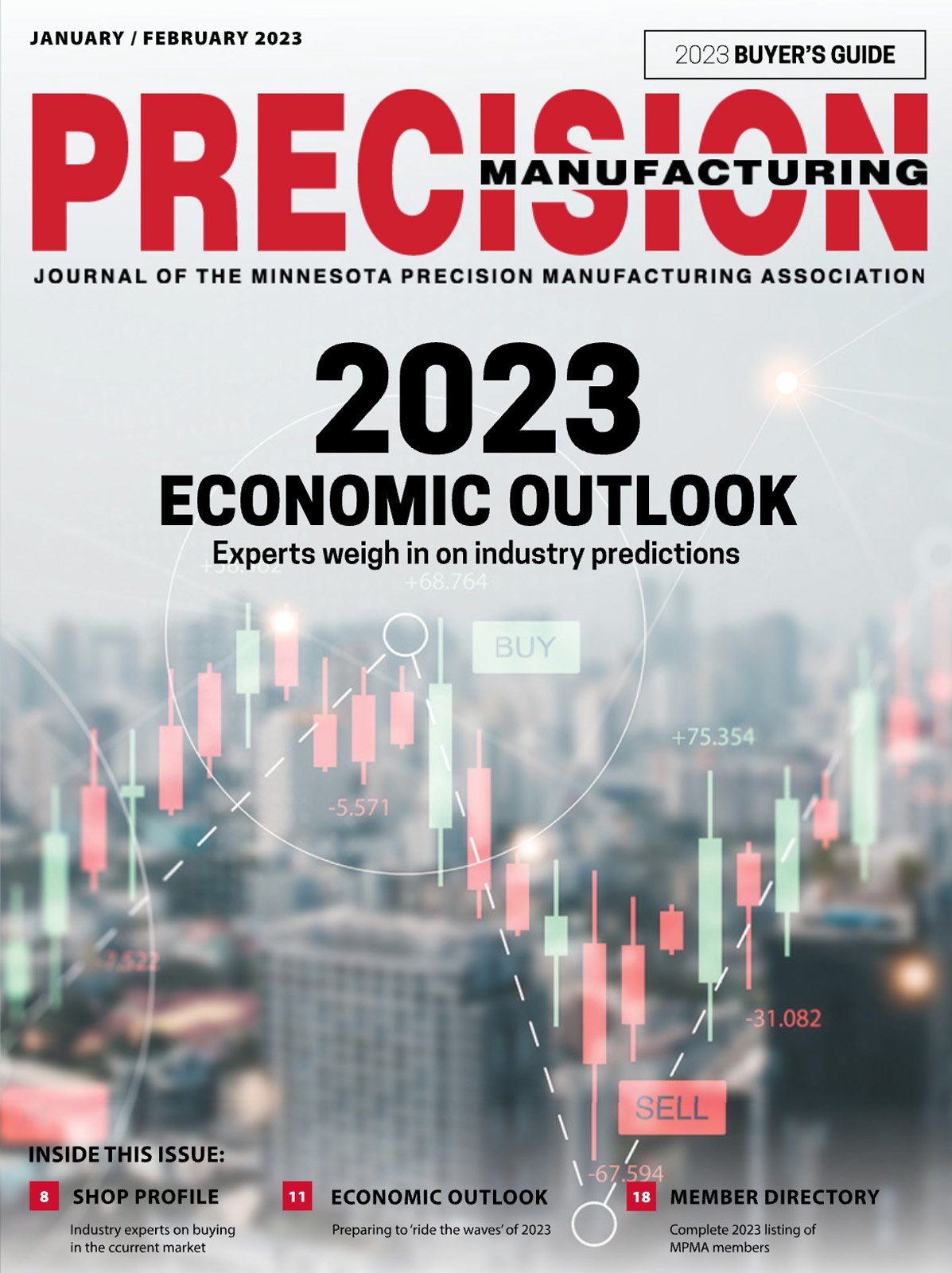
A Story of Slow Growth
Experts weigh in on what happened in 2023 and weathering what’s to come in 2024
At both the local and national level, the economy saw rain and shine in 2023, and Minnesota manufacturers have felt it all.
Last year around this time, rumors of an impending recession had many Americans feeling nervous about what was to come. But while a large group of economists predicted a possible downturn in 2023, months of strong data led some experts to push back their predictions further into 2024 or even cancel them altogether.
Though it came as a surprise to some, the economy did continue growing in 2023, said Joe Mahon, Regional Outreach Director at the Federal Reserve Bank of Minneapolis. There are a few key factors that this growth can be attributed to.
“Month after month, we’ve seen the economy continue to add jobs,” Mahon said. “The data that we have on GDP (Gross Domestic Product, or the value of goods and services that the economy is producing), has continued to grow.”
While the overall economy has seen some trends toward slow growth, the manufacturing sector has started to
take turns cautiously. Continuing labor shortages and concerns about recent state legislation have left many uncertain of what lies ahead in 2024.
An improving labor market
Unemployment remains one of the main indicators of economic health, and for the past few years, unemployment
in Minnesota has been relatively low, especially as compared to the nation as a whole, said Sean O’Neil, Director of Economic Development and Research with the Minnesota Chamber of Commerce.
The largest dip in recent history was during the pandemic, which has had a lasting effect on employment. In April 2020, the Minnesota economy lost over 360,000 jobs in a single month, according to data from the Minnesota Department of Employment and Economic Development (DEED). This marked the single-worst over-the-year (OTY) job loss since DEED started collecting monthly data on employment.
By the third quarter of 2023, O’Neil said, Minnesota had finally recovered all of the jobs that were lost in the 2020 pandemic. In addition, there’s been an increase in labor force participation rate and continued wage gains in the workforce.
“When you look at overall growth in our economy, it has been expanding at a slower rate throughout this recovery and growth period we’ve been in since the 2020 downturn,” said O’Neil. “We’ve been in this holding place where our economy remains stable, but is growing slowly, both compared to previous years and for the state, but also slower than other states around the U.S.”
For instance, Minnesota’s GDP growth rate has consistently ranked around 35th out of the 50 states, said O’Neil, and post- pandemic job recovery has been lagging behind other states.
“Then you add on top of that some of the macroeconomic factors that are impacting Minnesota related to rising interest rates and inflation, there are a lot of cost drivers that are impacting businesses,” said O’Neil. “I think many [business owners] are feeling the weight of the cost increases that have piled up over the past couple of years.”
The state of manufacturing
While jobs have been added across the board, not every industry has seen equal benefits. Economic sectors including service and hospitality, entertainment and even healthcare (many of which were disproportionately affected during the pandemic) and even construction have contributed to the majority of new jobs in Minnesota. Meanwhile, the ongoing labor shortage problem manufacturers face tells a different story.
For a while, O’Neil said, manufacturing was one of the quickest-growing industries in Minnesota. In early 2023, though, the manufacturing sector started shedding jobs.
“Industries [like manufacturing] that are more exposed to national and global markets, that are more sensitive to rising interest rates, they’ve been feeling those impacts more recently,” O’Neil said.
Mahon, who meets regularly with Minnesota manufacturers, said the sentiment he’s picking up from those he’s spoken with is a bit more negative.
“Over the last few months, the manufacturers that we survey have
been telling me that they’ve seen
average demand come down, they’re spending less, and they’re less likely to be considering big capital investments right now, because things have slowed a bit,” Mahon said.
While Mahon said some manufacturers report that business is good right now, the overall trend appears to be moving toward a slow-down.
The data
Industry data points to an impending downturn in 2024.
Creighton University in Omaha, Nebraska publishes a monthly survey, the Mid-America Manufacturing Index, which has become a trusted indicator of the current health of the manufacturing industry.
As of November 2023 (the most recent data at the time this article was written), Minnesota had an overall index of 43.9, as compared to 52.2 at the beginning of the year. The overall index had dropped to its lowest since June 2020, putting it
in a range that indicates recessionary conditions, according to Creighton.
The Bureau of Labor Statistics also found that between April and November 2023, the industry lost 12,000 jobs overall.
Moving forward
“Looking at the impact of what was passed in the 2022 legislative session remains a focus of ours,” O’Neil said. “[The Chamber] will continue to advocate for businesses at the State Capitol, but also try to find some private sector solutions to help them lower costs.”
It’s impossible to predict what will happen in 2024.
“2023 was a year of continued growth,” Mahon said. “I think that we’re seeing some signs and that things are slowing down for manufacturers. But it’s anybody’s guess whether that’s going to be a longer lasting phenomenon, or whether that’s a temporary blip.”
January 23, 2024




